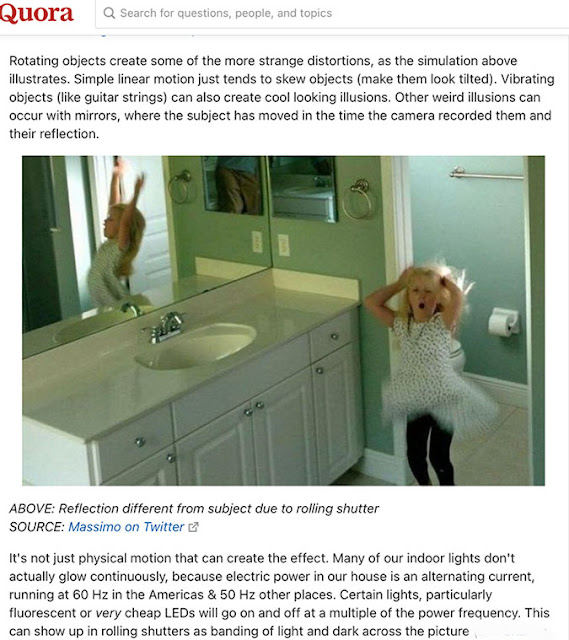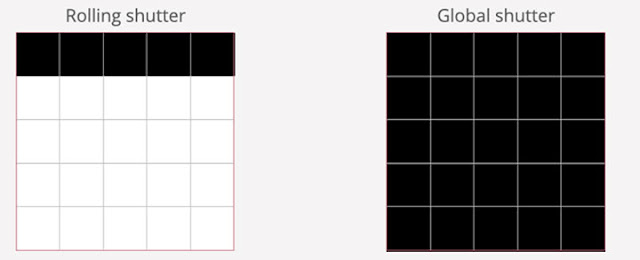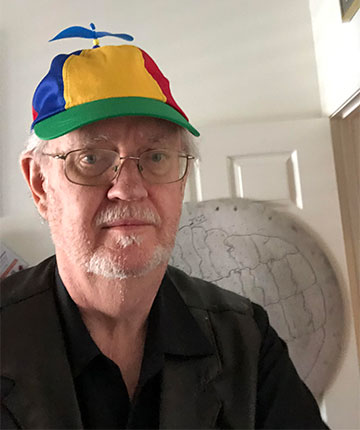Greetings from Palmia Observatory
We watched the first orbital launch attempt of the SpaceX Starship online. It didn't make it to orbit, but that story is told elsewhere. Here we want to discuss the optical illusion displayed in the launch videos where the rocket seemed to be made of rubber and was wildly bending in all sorts of directions.
The rubber rocket illusion is not seen this still image taken from one of the videos. But what causes this often observed effect when watching the whole video?
 |
| Booster 7, Starship 24 launch on April 20 (Source: WAI) |
This effect reminds me of another observed effect when the light from the photographed object passes through heavy turbulence in the air. Check out this awesome photo showing a Falcon 9 launch where the perspective shows the rocket passing in front of the moon. Notice how the bottom edge of moon is quite distorted with little fingers appearing in the image, while the top of lunar image shows no ill effects of any distortion. This effect is likely to be caused by the air density fluctuations in the line of sight between moon and the camera due to the rocket exhaust plume.
 |
| Falcon 9 launch with full moon in the background (Source: Trevor Mahlmann) |
Both of these illusions could be caused by the same type of distortion called "rolling shutter effect." Check out the two versions of the rotating airplane propeller in the photo below. The image on the left shows the rotating propeller with little distortion, but the right hand view shows a wildly distorted view of the airplane propeller.
 |
| Airplane propeller rolling shutter distortion example (Source: Studiobinder.com) |
Here is one more example with a front view of a rotating airplane propeller.
 |
| Airplane propeller rolling shutter distortion example (Source: Studiobinder.com) |
This example of rolling shutter distortion of vibrating guitar strings is really interesting too.
 |
| Rolling shutter distortion seen in photo of vibrating guitar strings (Source: StudioBinder.com) |
This next example from a Quora article on rolling shutter distortion is really interesting. It shows an image of a girl moving excitedly moving and how her reflection in the mirror is quite different. The rolling shutter effect here seems to have the rolling shutter moving horizontally to the camera frame. This is sort of like low speed special relativity effects of non-simultaneity. Neat!
 |
| Rolling shutter effects reflection and subject differences (Source: Massimo on Twitter) |
So what is going on in the camera sensor to account for some of these strange effects? In the following diagram, we see representations of a camera sensor, with a 5 x 5 pixel array. Cameras using a global shutter design will expose all pixels at the same time and then change some voltage gate or bias signal so that whatever happens next in front of the camera no pixels are changed until after all pixels have been read out and stored. In the rolling shutter camera design, one segment of the camera array, in this case just one line of 5 pixels is exposed and then read out immediately. Then the next line of pixels is exposed and then again read out immediately. In this case if something has changed in front of the camera then the remaining unexposed and unread pixels can reflect that change.
So, if the camera is operating in video mode at 30 frames per second, the actual image captured at the bottom of the frame is actually 1/30 second behind what was captured at the top of the frame.
 |
| Conceptual pixel readout for both rolling shutter and global shutter (Source: L Puzzo, 1/25/2011) |
For me details about rolling shutter operation check out the rest of the article a: https://www.mosaic51.com/technology/rolling-vs-global-shutter-camera-effects-explained/
So, in conclusion we see that astronomical photography with DSLR or other CCD cameras with real mechanical shutters can take very long exposures and not suffer the kind of distortion we have seen here. But if the astronomical exposure time is long enough and the camera is not on a tracking mount, we can suffer from streaking and other distortion effects due to the motion of the Earth.
Now, I had every intention of conducting my own investigation of rolling shutter effects, so after putting on my propeller hat, I tried taking some iPhone videos, but mostly just got some blurring images and couldn't get any interesting examples. But, hey, I put my own body on the line for a scientific study, so I'm tired and guess now I deserve a martini!
 |
| Resident Astronomer George prepares for some personal propeller effects (Source: Palmia Observatory) |
Until next time,

No comments:
Post a Comment